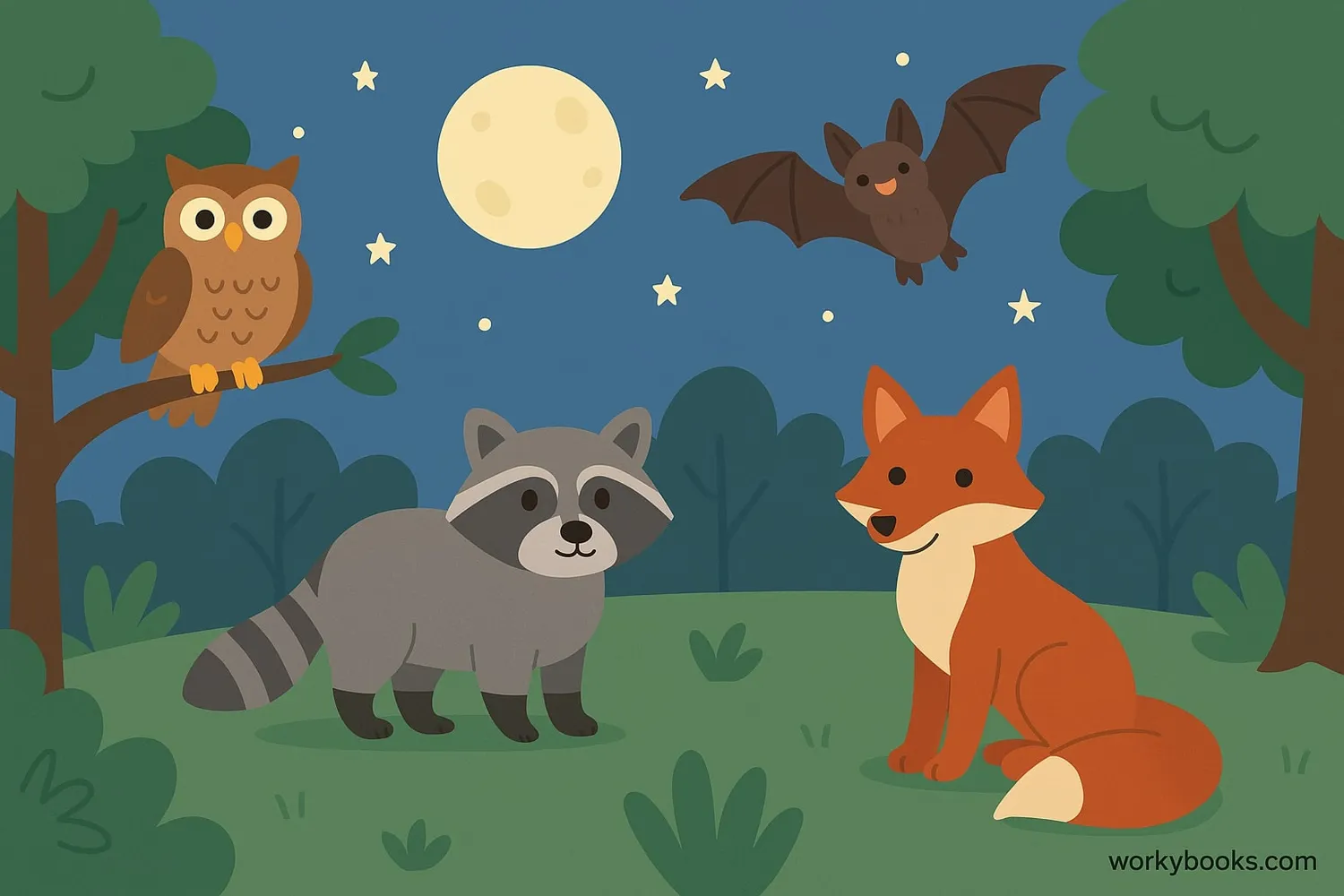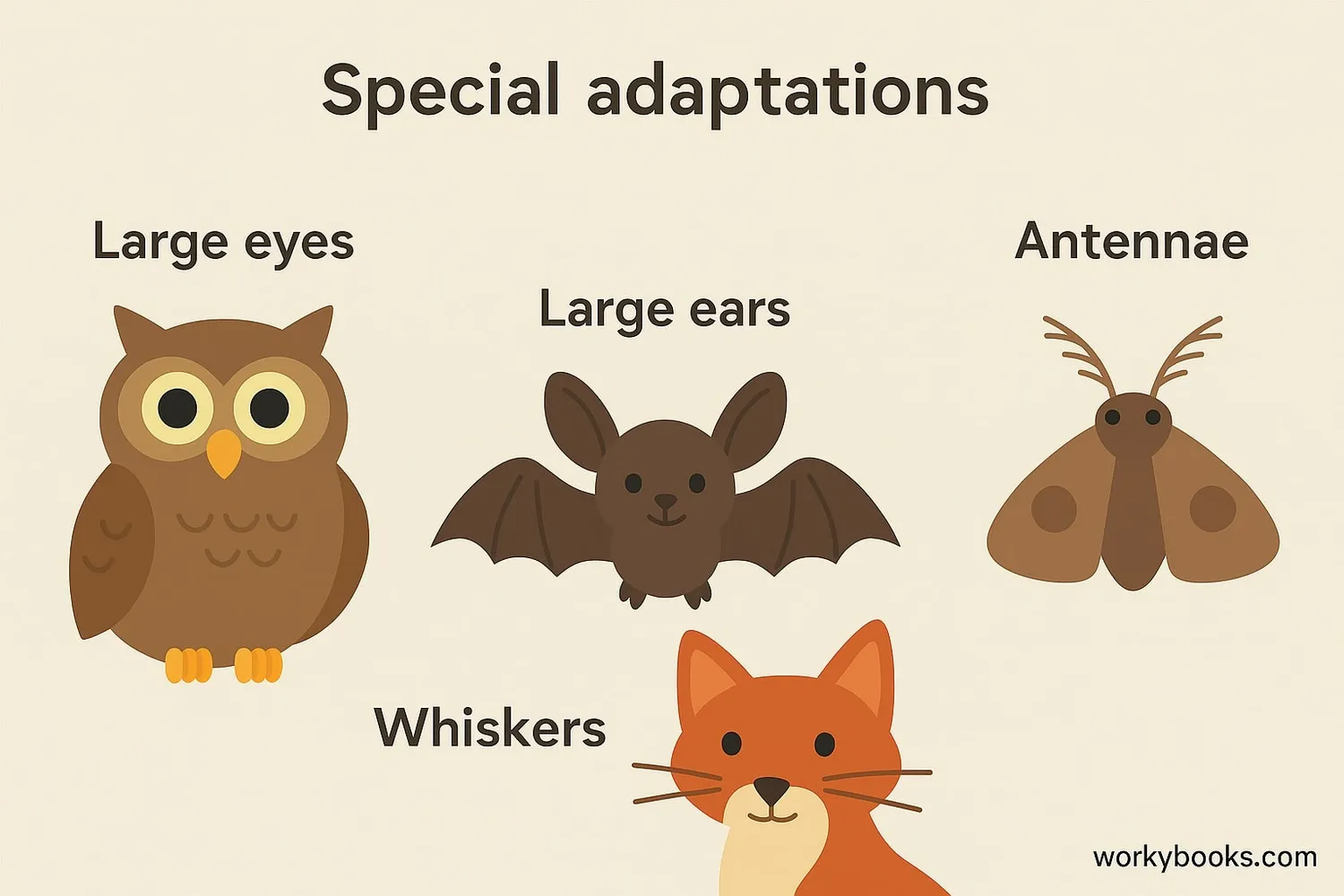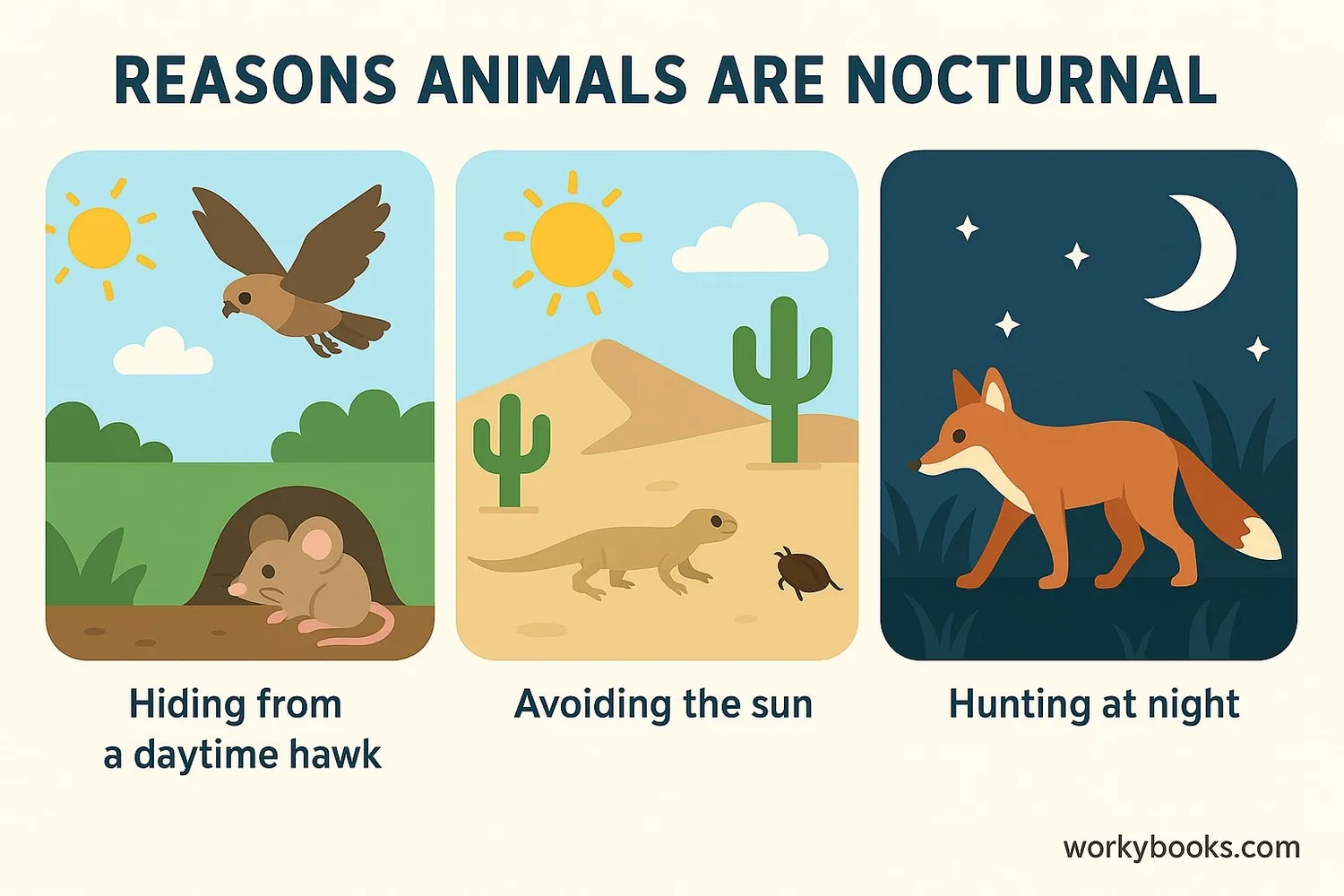Nocturnal - Definition, Examples, Quiz, FAQ, Trivia
Discover the amazing world of animals that thrive at night!
What Does Nocturnal Mean?
Nocturnal Definition
Nocturnal means active at night. Animals described as nocturnal are most active during the night and sleep during the day.

Nocturnal animals are creatures that are primarily active during the night and sleep during the day. This behavior helps them avoid predators, hunt more effectively, and stay cool in hot environments.
Animals can be classified by their activity patterns:
Nocturnal
Active at night
(e.g., owls, bats, raccoons)
Diurnal
Active during the day
(e.g., squirrels, songbirds)
Crepuscular
Active at dawn and dusk
(e.g., deer, rabbits)
Nocturnal Examples
Common nocturnal animals include: owls, bats, raccoons, foxes, hedgehogs, opossums, fireflies, and many species of moths and spiders.
Night Adaptations

Nocturnal animals have developed special adaptations that help them survive and thrive in the darkness. These amazing features allow them to navigate, hunt, and avoid predators at night:
Enhanced Vision
Larger eyes with more light-sensitive cells to see in low light
Super Hearing
Larger ears to detect faint sounds of prey or predators
Echolocation
Bats use sound waves to navigate and find food in complete darkness
Sense of Touch
Whiskers and sensitive paws help animals feel their way in the dark
Keen Smell
Excellent sense of smell to locate food and detect predators
Night Vision
Owls have such good night vision that they can see a mouse moving from 100 feet away in near-total darkness!
Why Are Some Animals Nocturnal?

Animals have evolved to be nocturnal for several important reasons. These nocturnal habits help them survive in their environments:
Avoid Predators
Many prey animals are active at night to avoid daytime predators
Escape Heat
In hot climates, night activity helps animals stay cool and conserve water
Hunting Advantage
Predators use darkness as cover to sneak up on their prey
Less Competition
Night activity reduces competition with diurnal animals for resources
Desert Survival
In deserts, temperatures can drop 30-40°F at night. Nocturnal animals like kangaroo rats avoid the extreme daytime heat by being active at night.
Nocturnal Animals Quiz
Test your knowledge about nocturnal animals with this interactive quiz!
Frequently Asked Questions
Here are answers to common questions about nocturnal animals:
Amazing Nocturnal Trivia
Discover fascinating facts about nighttime creatures:
Night Vision
Tarsiers have the largest eyes relative to body size of any mammal. Their eyes are so big they can't move them - instead they rotate their heads 180°!
Firefly Communication
Each firefly species has its own unique flashing pattern. They use these light signals to find mates in the dark without attracting the wrong species!
Super Hearing
Barn owls can locate prey in complete darkness using only sound. Their dish-shaped faces funnel sound to their ears, helping them pinpoint tiny movements.
Nighttime Navigators
Some nocturnal animals use the stars to navigate! Dung beetles roll their dung balls in straight lines by following the Milky Way across the night sky.





